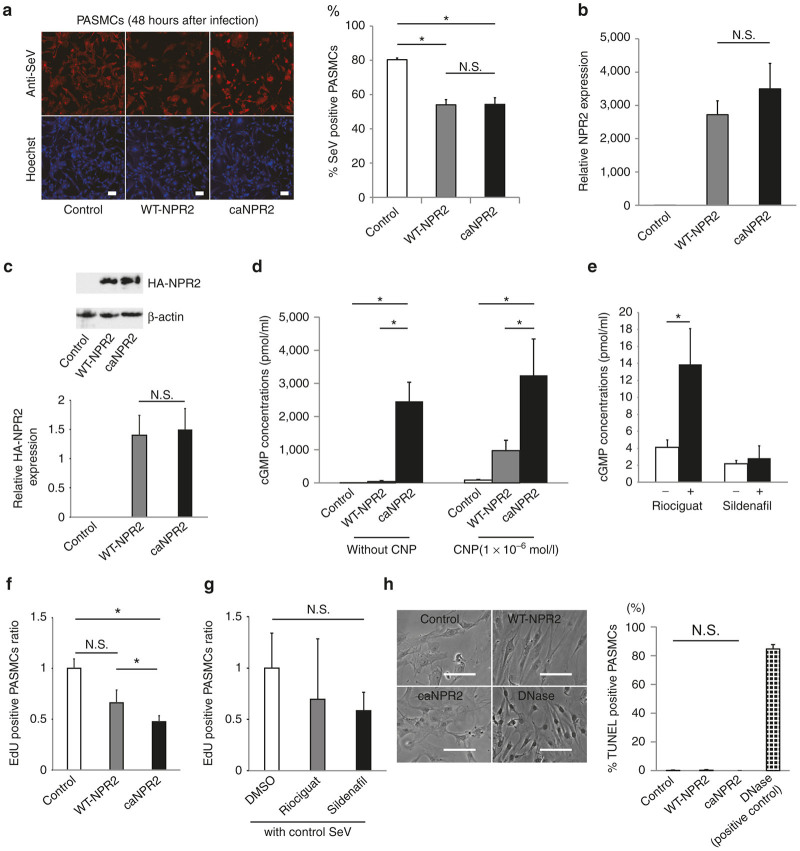Figure 1.
Transduction of the constitutively active mutant of natriuretic peptide receptor 2 (caNPR2) by Sendai virus (SeV) vectors in human pulmonary arterial smooth muscle cells (PASMCs). (a) Immunocytochemical analyses show that SeV vectors carrying Azami-Green control, wild-type NPR2 (WT-NPR2), and caNPR2 efficiently infect PASMCs. The infectious ability of the Azami-Green-expressing control SeV vector (purchased as ready to use) is higher than that of the WT-NPR2- or caNPR2-expressing vectors, with no significant difference between WT-NPR2- and caNPR2-expressing SeV vectors (n = 3). Bar = 100 µm. *P < 0.05. N.S., not significant. (b) A quantitative PCR analysis shows no significant difference in NPR2 expression levels between WT-NPR2- and caNPR2-transduced PASMCs (n = 3). N.S., not significant. (c) Western blotting demonstrates that NPR2 expression levels were not different between WT-NPR2- and caNPR2-transduced PASMCs, as detected by anti-HA tag antibody (n = 3). N.S., not significant. (d) The overexpression of caNPR2 induces the synthesis of larger amounts of cyclic guanosine monophosphate (cGMP) in PASMCs with and without the C-type natriuretic peptide (CNP) stimulation (n = 3). Note that caNPR2 has the ability to produce large amounts of cGMP, regardless of the CNP stimulation. Even under the unphysiologically high concentration of CNP (10−6 mol/l), cGMP levels are higher in caNPR2-expressing cells than in WT-NPR2-expressing cells. *P < 0.05. (e) The effects of riociguat (100 µmol/l) or sildenafil (5 µmol/l) on cGMP concentrations in PASMCs (n = 3 for riociguat; n = 8 for sildenafil). *P < 0.05. (f) The EdU incorporation assay reveals that caNPR2 has the ability to suppress the proliferation of PASMCs (n = 6). *P < 0.05. (g) The EdU incorporation assay reveals that riociguat (100 µmol/l) and sildenafil (5 µmol/l) did not have significant effects, although we found a small tendency toward attenuation of cell proliferation of PASMCs (n = 4). N.S., not significant. (h) The TUNEL assay demonstrates that caNPR2 does not induce apoptosis in PASMCs (n = 3). The left panels show representative phase contrast images. Bar = 500 µm. The right panel shows corresponding quantifications. N.S., not significant.

